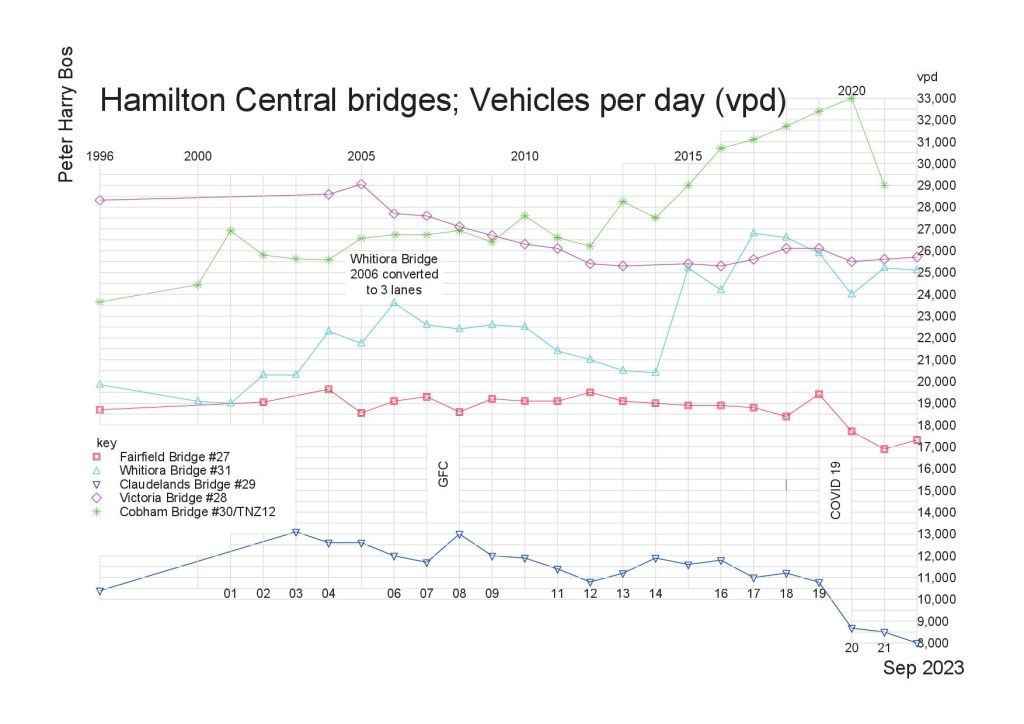The decision to three-lane Whitiora Bridge was a political decision (link) that has not benefited Hamilton’s transport network. The third car lane is there to give cars a preserved benefit. The actual number of cars crossing would be the same if it still had two standard-width lanes with cycle lanes each side. The narrowing of the west-bound lane on the eastern end reduces the number of cars a lane can move (see ‘hard working lanes’ post).
Over the past eight years Whitiora Bridge and Victoria Bridge have had similar motor vehicles per day (vpd) counts. Victoria moves many more people with its 15 to 20 buses per hour and its bike lanes. Whitiora Bridge, with less than half the buses, a narrower footpath (too narrow for mobility scooters to pass) and no cycle lanes (only the bravest cyclists attempt it, slowing all traffic to bicycle speed) moves a lot fewer people.
My image above shows the long-term trend in vpd across Hamilton’s central bridges and shows that adding the third lane to the Whitiora Bridge led to a slow 8-year decline in vpd, followed by a two step increase, and now a trend similar to Victoria Bridge. (Link - Note even though numbers can be presented as exacts, they should be read as nominal, the purpose is to show the trend)
Over the past three years, policies to manage Covid suppressed travel a few times for a few months, so above is Hamilton’s active counter results for Whitiora Bridge, showing a steady weekday average of 20,000 vpd. (link - Note it is a live update so click to see latest weekday Average)
Above is the higher count for Victoria Bridge, showing 21,000 vpd. My argument is that the Whitiora Bridge would move more people if it was converted back from a three car-lane design to 2 car plus 2 cycle lanes, like Victoria Bridge.








Hey Peter, do you happen to have an image of the bridge when it was two car lanes?
I've been scouring the internet and coming up empty handed.
Totally support a change back to two car lanes + cycle lanes (hopefully protected) & walkways.